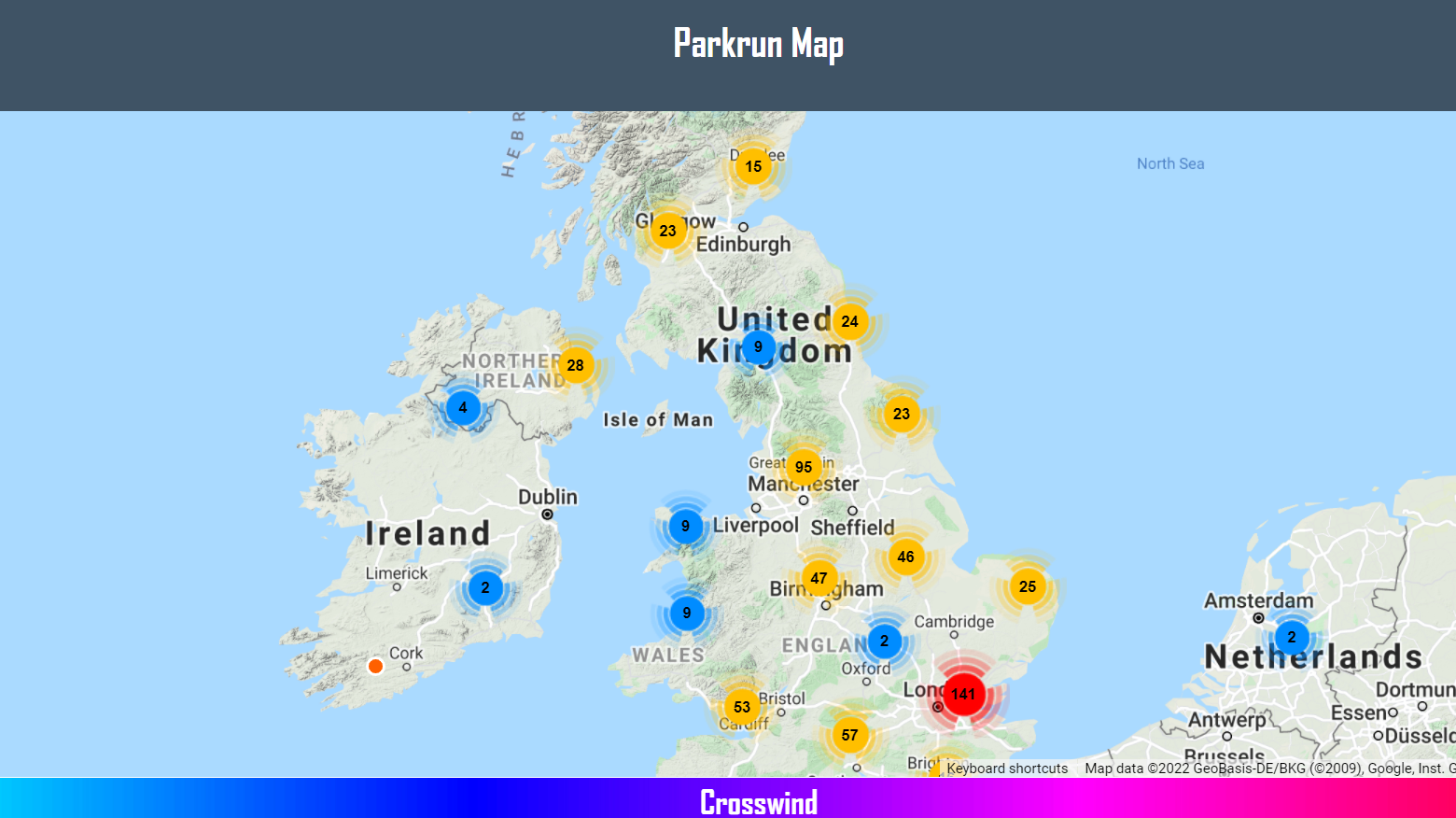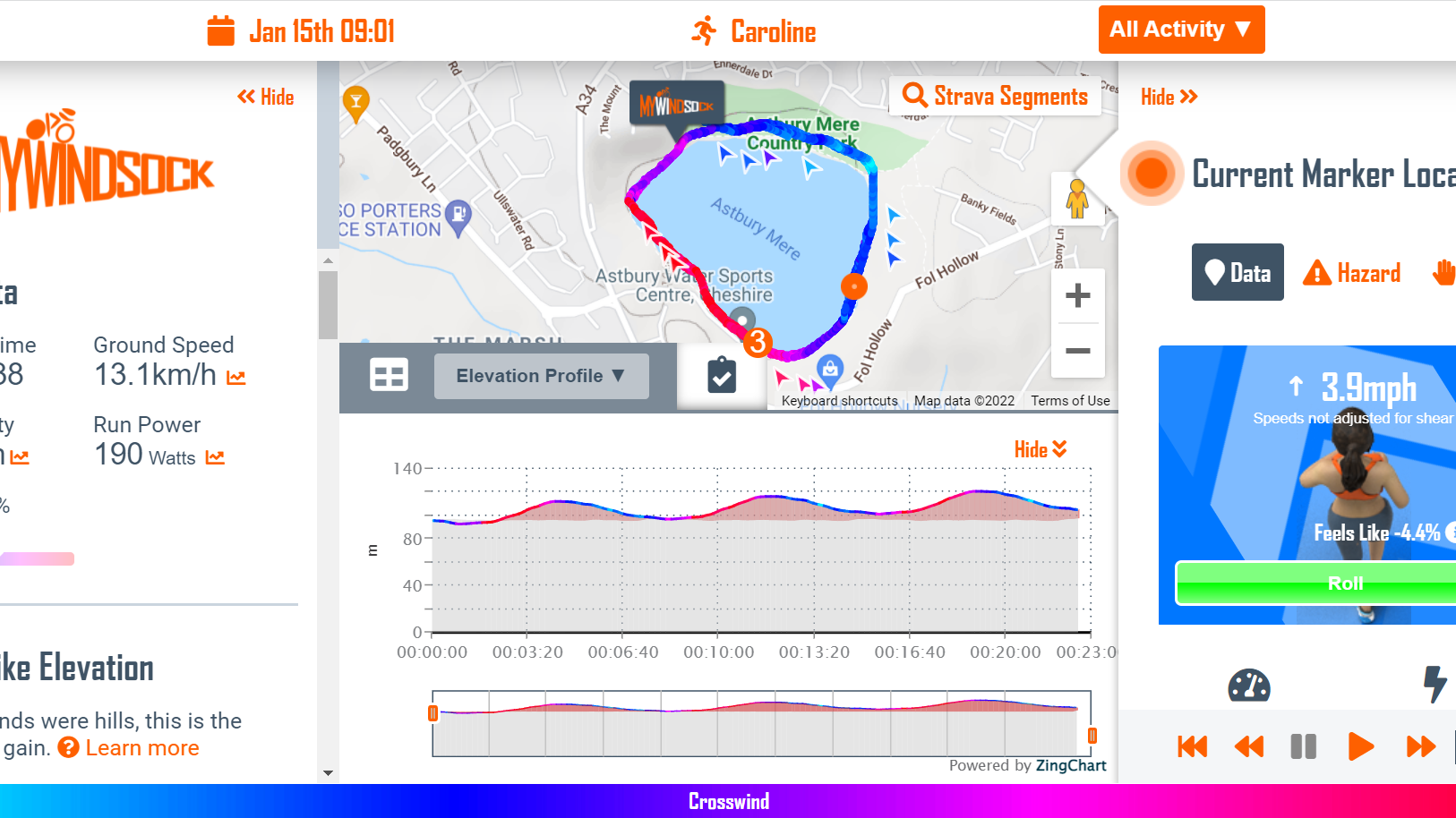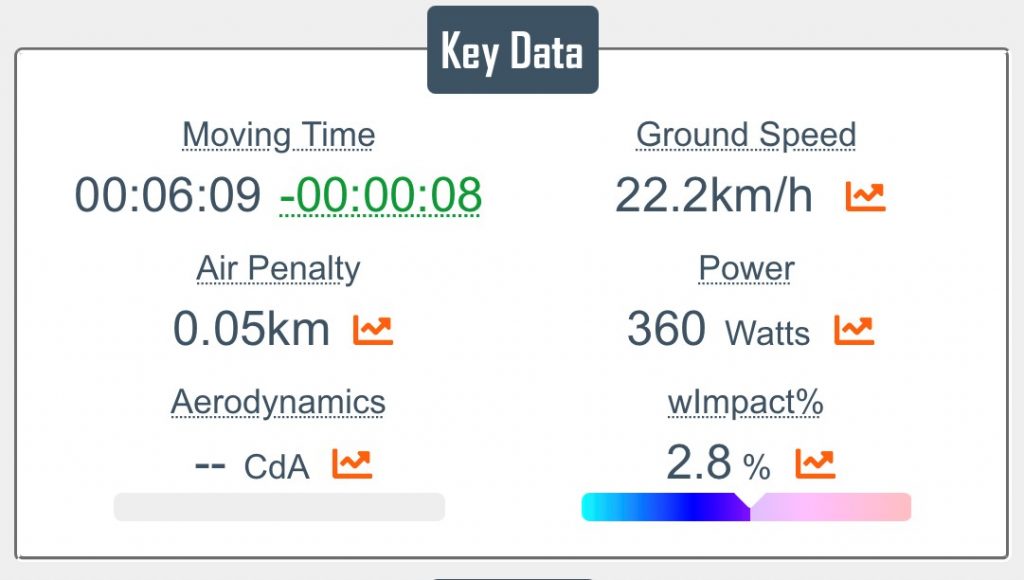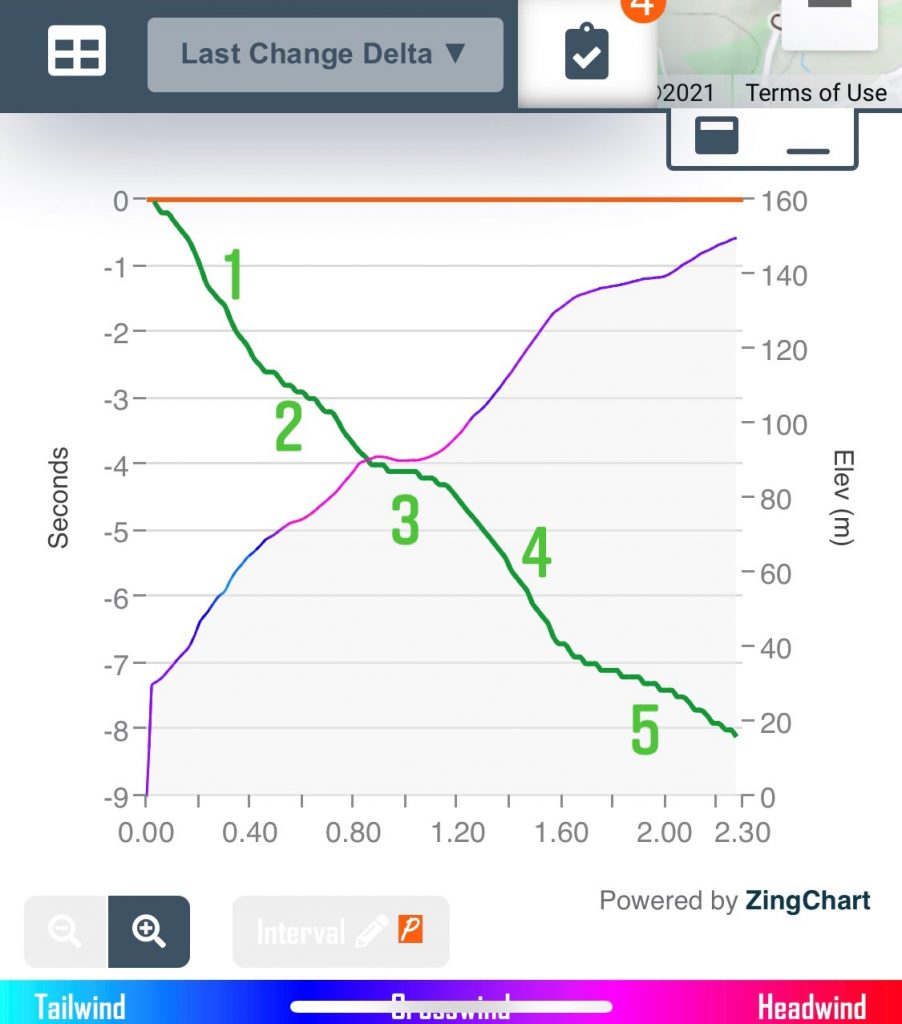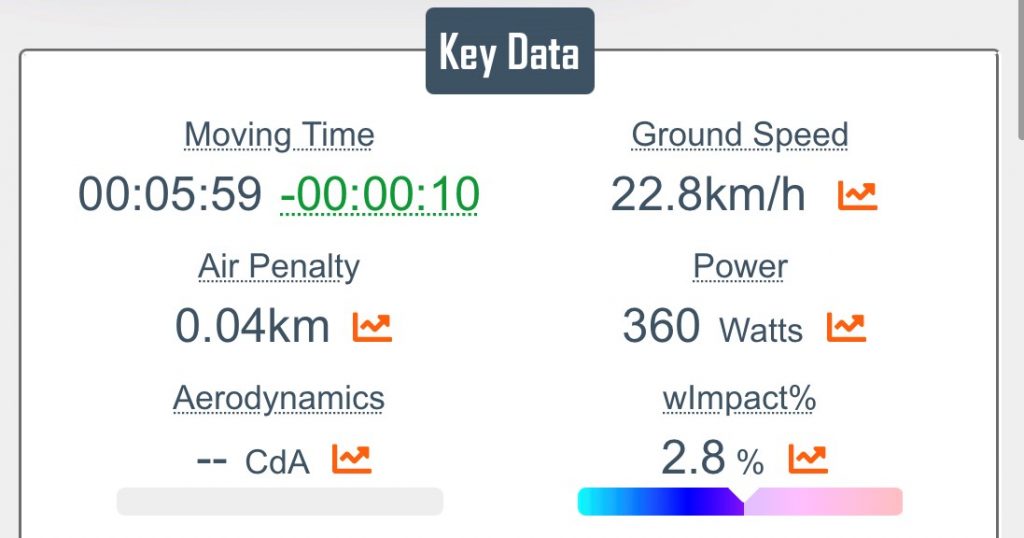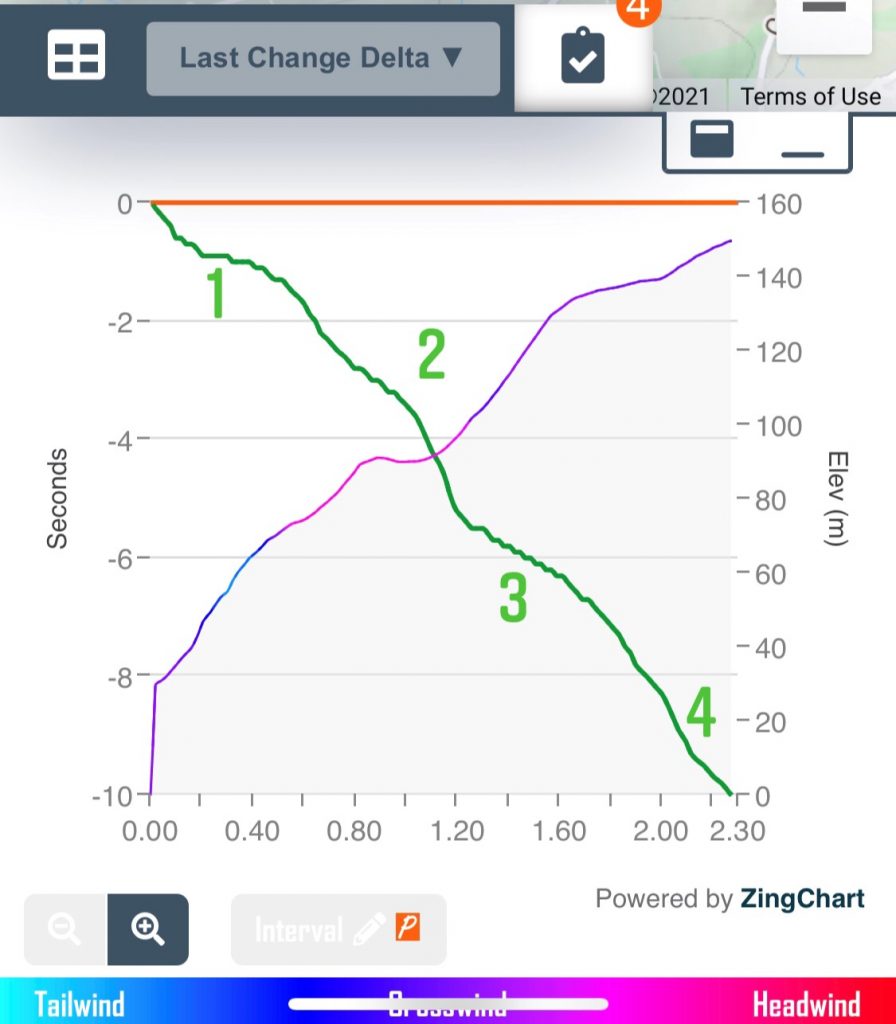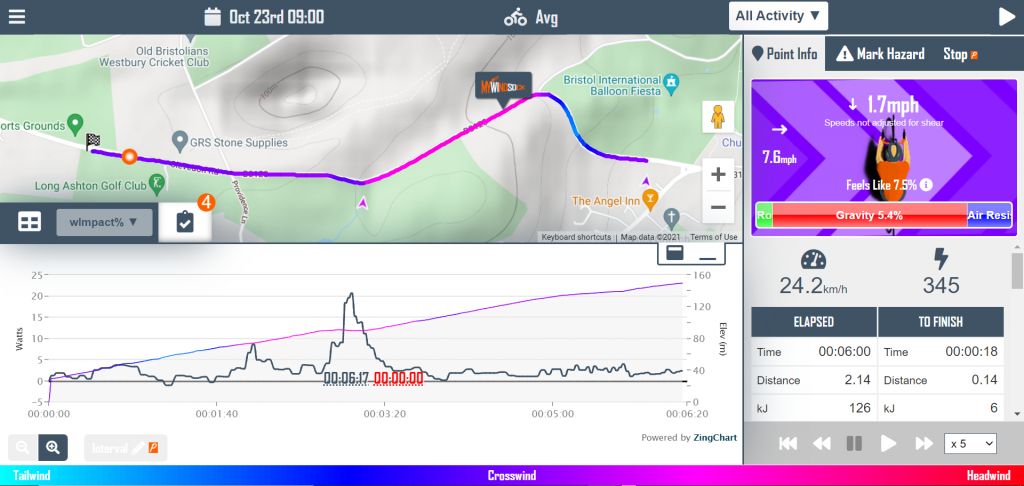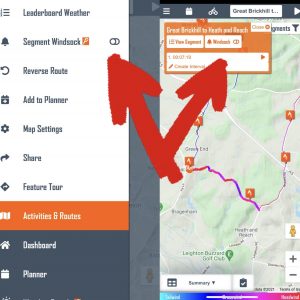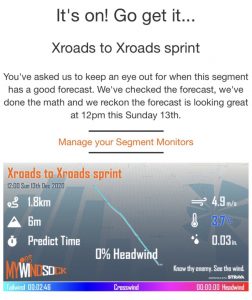
We’re excited for the FTP Racing U7B time trial on Saturday 9th April. This is a quick look at some course dynamics. All charts are correct to the current forecast. We recommend viewing your own forecast, to see the most up to date course forecast and data. View the course and the forecast for Saturday here.
How the course will feel
‘Feels Like Elevation’, helps us to visualise the wind in the same way as we would the elevation profile of a hill. We are equating the wind to the hills. Helping us to see how the wind would feel, by viewing it’s equivalent gradient. This helps us formulate our mental strategy for race day.
Below is the graph for Saturday’s race. The Westerly 10mph wind, is now combined with the elevation profile. The grey area is simply the standard elevation profile. However, the coloured line shows the wind and elevation together to give you a clearer idea of how the course will feel.
The red areas are showing that the wind has created harder feel than the original elevation profile would suggest.

Where should we put more power out
We next turn to where the course will give us the most return, for a little extra power. The green areas of the line chart below shows were on the course we get the greatest return for each additional Watt. Pay attention to 3.5-6km, 9-9.3km and 10.75-11.25km, those locations will give you a good return on a slightly increased power output.
On the flip slide, the red section, will give you an idea as to where it would be less advantageus to increase your power. Looking at 11.25km to 14km, it wouldn’t be as efficient to increase power here. Better to increase the power in the preceeding 0.5km.
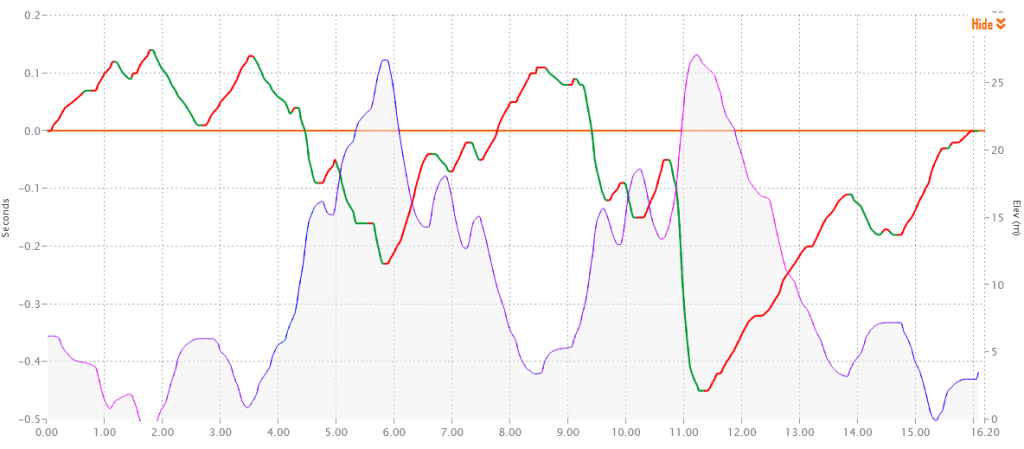
Where aero is most important
Next, where on the course does an increase in our focus on aero pay off the most. This is depicted in Green below. In red aerodynamics are having less affect on the overall speed. This is not to say aero is unimportant in these areas. This graph simply shows that if we were to increase our aerodynamic efficiency where along the course would that increase in efficiency give us the greatest return.
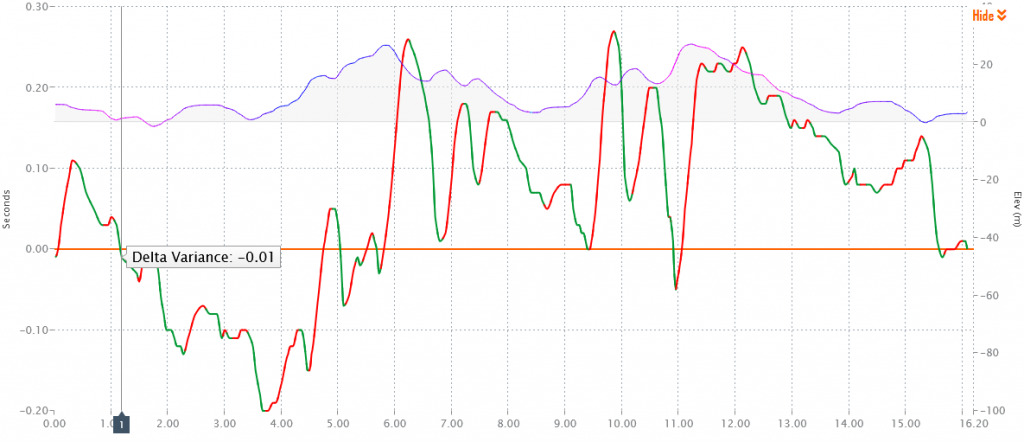
You can make your own experiments using myWindsock for all your time trials. We have all the UK time trials already preloaded for you. Simply visit our CTT Time Trial Forecasts.




 UK Time Trial Events
UK Time Trial Events